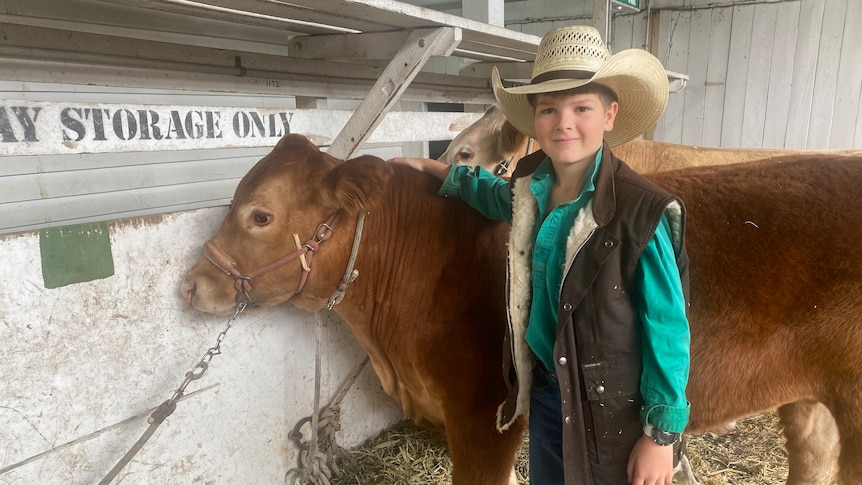While fears of foot-and-mouth disease loom over the Ekka, organizers and breeders say “very comprehensive” plans are in place to limit risk.
Cattle began arriving yesterday for the stud beef competition, the largest annual showing of stud beef in the southern hemisphere.
Around 1,300 head of cattle are expected to attend the show, which runs from August 6 to 14.
Royal National Agricultural and Industrial Association of Queensland (RNA) chief executive Brendan Christou said organizers were working closely with authorities.
“Biosecurity Queensland will be here, onsite, throughout the show and we have our own vet committee that looks at all of those things as well,” he said.
Mr Christou said there were a range of measures being taken, including ensuring animals were healthy before their arrival, separation of breeds and use of foot baths.
“It is very comprehensive,” he said.
‘Very minimal risk’
However, for all the precautions, some breeders are still unwilling to take the risk.
Breeder Bronwyn Betts will be missing her first Ekka in more than a decade
“We were just concerned about the risk of foot-and-mouth disease, notwithstanding that that risk is low. The potential consequences can be quite dire,” she said.
Ms Betts said the Ekka and shows like it brought greater risk than other sales meet-ups because of the large presence of the public.
“Just in terms of the demographics of people [who] are there. At a sale, you’re largely going to get cattle people that are going to be coming in from cattle properties. They’ll be cognisant of foot-and-mouth [risk] and they will have taken measures,” she said.
“But that’s different from a show where there’s larger numbers of [the] public [who] are entering into an area, and they may well include some people [who] have recently returned from the popular holiday destination of Bali.
“I think there needs to be a lot more public education about what foot-and-mouth disease is, how it enters our country but, also, once it does, how it moves around, because the reality is that people play a big role in that.”
At the Ekka, cattle breeder Jason Childs said he felt enough precautions were being taken.
“Foot and mouth has been around the world for a long time and it hasn’t managed to get into Australia yet and it’s not in Australia yet,” he said.
“I think the risk here is very, very minimal.”
What is foot-and-mouth disease?
Foot and mouth (FMD) affects cloven-hoofed animals, including cattle, pigs, goats and deer.
It causes fever and painful blisters on the animals’ tongues and hooves, which can make animals lick.
While Australia has been FMD-free for more than 100 years, the disease was detected in Indonesia in May and, by July, it had spread to Bali, sparking concerns it could be brought back by tourists.
It is not dangerous to humans, but people can facilitate the spread through products containing fragments of the disease or through dirty clothes and footwear.
FMD also spreads through close contact between animals and can be carried short distances by wind.
An outbreak in Australia would likely lead to mass culls of infected animals. It would also rob the country of its status as being free of FMD, causing major disruption to the meat and livestock trade.
The Australian Bureau of Agricultural and Resource Economics and Sciences (ABARES) estimates an outbreak could cost the country $80 billion over 10 years.
After Indonesia’s outbreak spread to Bali, the federal government introduced extra measures at airports to stop it spreading to Australia.
All travelers from Indonesia must walk on sanitation mats containing citric acid to kill the virus, biosecurity detectors dogs have been deployed in airports in Darwin and Cairns to check imported goods, and 18 extra biosecurity staff are at airports and postal centers around Australia.
Earlier this month, some pork products were removed from supermarket shelves after viral fragments of FMD were found during testing.
So far, the government has committed $14 million to manage outbreaks of FMD and lumpy skin disease in Indonesia, on top of $1.5 million to supply vaccines.
.
